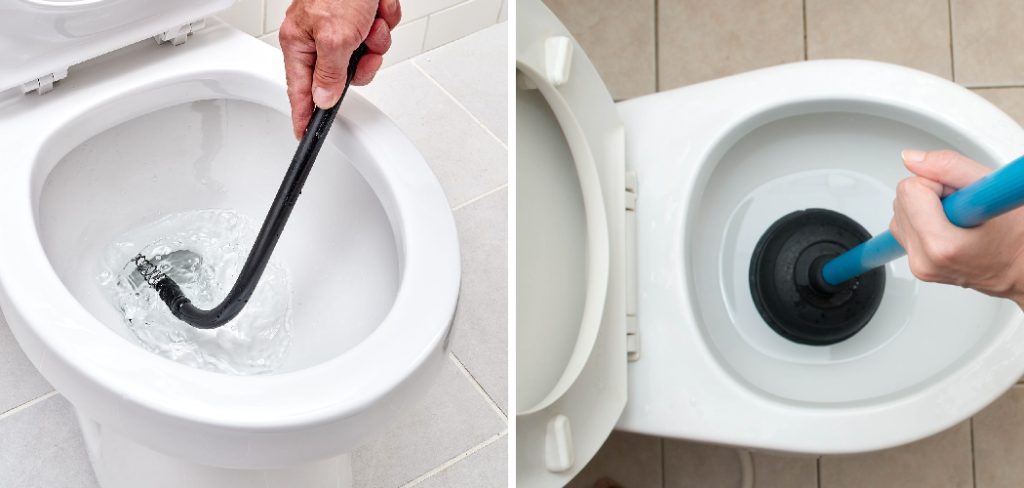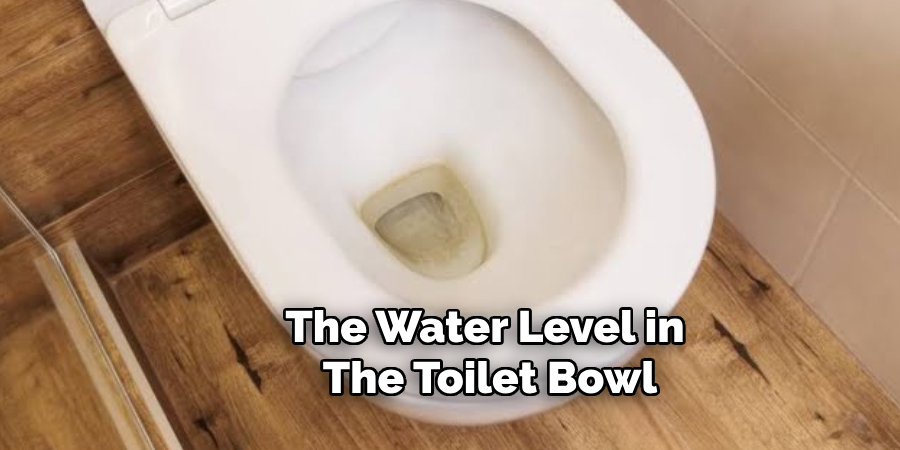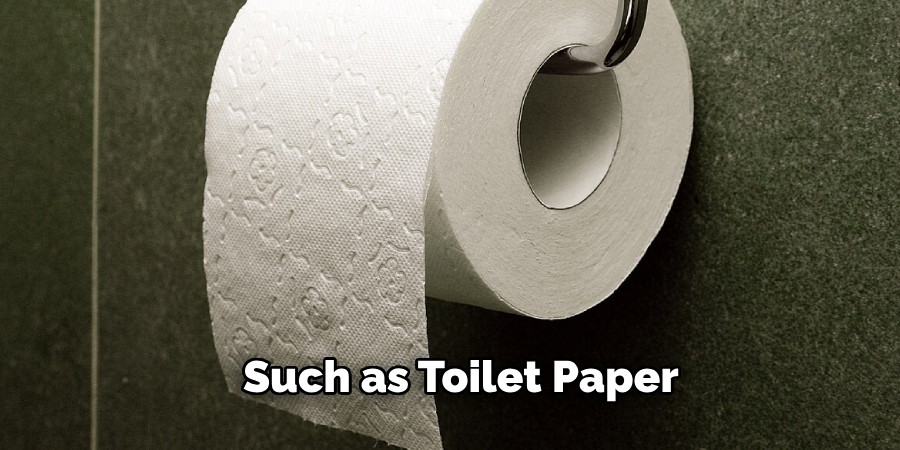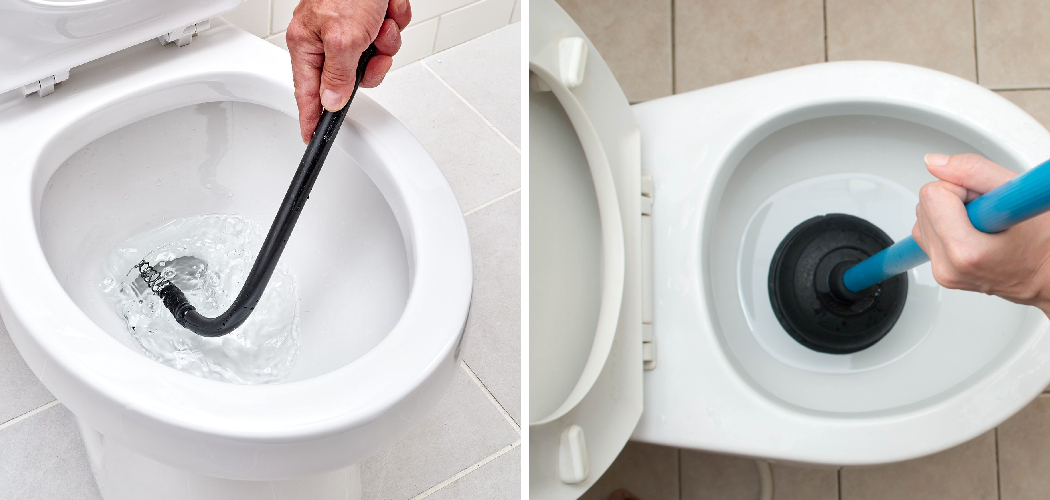Determining if a toilet is unclogged without flushing is essential to avoid potential overflow or further plumbing issues.

Several indicators can help you assess the state of the toilet’s drainage before attempting to flush again. Visual cues such as observing the water level in the bowl can indicate if the blockage has cleared or if it persists.
Additionally, listening for gurgling or draining sounds from the toilet and inspecting for any signs of water movement or draining can provide further clues. This guide will explore how to tell if a toilet is unclogged without flushing, offering practical advice on how to safely and effectively determine if a toilet is unclogged without risking additional water overflow or damage. By understanding these indicators, you can confidently assess the situation and take appropriate steps to address any remaining issues with your toilet’s drainage.
The Importance of Toilet Maintenance
Regular toilet maintenance is crucial for ensuring the smooth operation and longevity of your plumbing system.
Neglecting routine care can lead to persistent clogs, leaks, and even costly repairs. One of the primary reasons for maintaining your toilet is to prevent pipe blockages that could result in significant water damage to your home. Additionally, a well-maintained toilet enhances hygiene and reduces the spread of germs, fostering a healthier living environment.
Regular checks and cleaning can also identify small issues, like minor leaks or cracks, before they escalate into major problems. By investing time in proper toilet maintenance, you ensure the efficient performance of your plumbing system, contribute to lower water bills, and extend the lifespan of your toilet.
Understanding Toilet Clogs
Toilet clogs are a common household issue that can stem from various causes. One of the primary culprits is an excessive amount of toilet paper or the flushing of inappropriate items, such as wipes, feminine hygiene products, or even small toys. These objects can easily create obstructions within the plumbing, leading to a blockage.
Additionally, older plumbing systems may be more susceptible to clogs due to the buildup of mineral deposits or the degradation of pipes over time. Understanding the mechanics of how toilets function can also shed light on potential clogging issues.
Toilets operate using a combination of gravity and water pressure to flush waste through the pipes. Any disruption in this process, such as a partial obstruction or a low water level in the tank, can result in an ineffective flush and potential clogging.
By recognizing the common causes and underlying mechanisms of toilet clogs, homeowners can better prevent and address these nuisances, ensuring their plumbing remains in good working order.
10 Methods How to Tell if a Toilet Is Unclogged without Flushing
1. Check Water Level in the Bowl

The water level in the toilet bowl provides an initial indication of whether the toilet is unclogged. Normally, the water level should remain relatively stable after use, with minimal fluctuation.
If the water level is unusually low or rising higher than normal without flushing, it may indicate a partial or complete clog. Observe the water level for several minutes to detect any changes, as this can help determine the severity of the clog and inform your next steps.
2. Look for Signs of Drainage
Observe the toilet bowl for signs of drainage to assess if water is flowing out freely. Pour a small amount of water into the bowl from a bucket or container and observe how quickly it drains.
In an unclogged toilet, the water should drain smoothly and quickly down the drain without pooling or backing up. If you notice slow drainage, water pooling around the drain, or no drainage at all, it suggests a potential clog that requires further investigation.
3. Listen for Gurgling Noises
Gurgling noises coming from the toilet or drain pipe indicate air bubbles or trapped air in the plumbing system, often a sign of a partial clog. Listen closely near the toilet bowl and drain pipe for any unusual sounds when water is poured into the bowl or flushed nearby sinks and drains.

Gurgling noises accompanied by slow drainage or fluctuations in water level suggest that there may be an obstruction in the toilet’s plumbing system that needs to be addressed.
4. Inspect the Toilet Bowl for Visible Blockages
Visually inspect the inside of the toilet bowl for any visible blockages or foreign objects that may be causing the clog. Use a flashlight if necessary to illuminate hard-to-see areas, such as around the rim and inside the drain opening.
Look for items such as toilet paper, sanitary products, or small objects that may have inadvertently fallen into the bowl and become lodged in the trap or drain pipe. Removing visible blockages can often resolve minor clogs without the need for flushing.
5. Test with a Plunger
Using a plunger is a non-flushing method to test and potentially resolve a toilet clog. Place the plunger firmly over the toilet drain opening and create a tight seal.
Push and pull the plunger in a gentle pumping motion to create suction and pressure within the drain pipe. This action helps dislodge minor clogs and allows water to flow more freely. After several plunging attempts, observe if the water level in the bowl changes or if drainage improves, indicating that the clog may be clearing.
6. Use a Plumbing Snake or Auger
A plumbing snake or auger is a tool designed to reach deep into the toilet’s drain pipe to break up stubborn clogs. Insert the snake or auger into the toilet bowl drain opening and carefully maneuver it down the pipe.

Rotate the tool gently to hook onto and break apart the clog. Slowly retract the snake or auger while continuing to rotate, allowing any dislodged debris to be pulled out of the drain pipe. Repeat the process as needed until water flows freely, indicating the clog is cleared.
7. Check Other Plumbing Fixtures
To determine if the toilet clog is isolated or part of a larger plumbing issue, check other plumbing fixtures in the vicinity. Run water in nearby sinks, showers, or tubs to observe if they drain properly or exhibit signs of slow drainage.
Affecting multiple fixtures may indicate a main drain line clog or sewer line issue rather than a localized toilet clog. Identifying broader plumbing concerns helps in determining whether professional assistance is required for further inspection and repair.
8. Assess Toilet Behavior Over Time
Monitor the toilet’s behavior over a period of time to evaluate if the clog resolves naturally or persists. Sometimes, minor clogs caused by temporary blockages or debris can clear on their own with time and normal water usage.
Note any changes in water level, drainage speed, or unusual noises during regular use. If the toilet returns to normal function without intervention, it suggests that the clog was minor and has resolved without the need for immediate action.
9. Use Enzyme-Based Drain Cleaners
Enzyme-based drain cleaners are a non-harsh chemical option that can help break down organic waste and alleviate minor toilet clogs over time. Pour the recommended amount of enzyme cleaner into the toilet bowl and allow it to sit according to the manufacturer’s instructions.

Enzymes work by digesting organic matter, such as toilet paper and waste buildup, without causing damage to plumbing pipes or fixtures. Regular use of enzyme cleaners can help maintain drain cleanliness and prevent future clogs.
10. Consult a Professional Plumber
If all attempts to determine if a toilet is unclogged without flushing prove unsuccessful or if you suspect a more serious plumbing issue, consider consulting a professional plumber for assistance.
Plumbers have the expertise and specialized tools to diagnose and resolve complex clogs, blockages in drain pipes, or issues with the toilet’s internal components. They can conduct thorough inspections, perform necessary repairs, and provide recommendations for preventing future clogs or plumbing emergencies.
Things to Consider When Dealing with Toilet Clogs
- Type of Clog: Not all clogs are the same. Some are caused by organic materials, while others may be due to foreign objects. Understanding what might be causing the clog can help you choose the most effective method to clear it.
- Frequency of Clogs: If you find yourself dealing with clogged toilets frequently, it might indicate a more serious underlying issue, such as problems with your plumbing system or sewer line. Frequent clogs should be addressed by a professional to prevent recurring problems.
- Safety Concerns: When using chemical drain cleaners, it’s important to follow the instructions carefully and use appropriate protective gear. Some chemicals can cause skin irritation or damage to your plumbing if not used correctly.
- Age of Plumbing: Older plumbing systems may be more prone to clogs and damage. Be mindful of the age and condition of your pipes when attempting to clear a clog, as aggressive methods could cause more harm.
Conclusion
Determining if a toilet is unclogged without flushing requires careful observation, assessment of symptoms, and appropriate troubleshooting methods.
By following these ten comprehensive methods, you can effectively identify and address toilet clogs using non-flushing techniques. Monitoring water level changes, observing drainage behavior, and listening for unusual noises provide initial clues to the presence of a clog.
Utilizing tools such as a plunger, plumbing snake, or enzyme-based cleaners helps dislodge minor clogs and restore proper toilet function. Thanks for reading, and we hope this has given you some inspiration on how to tell if a toilet is unclogged without flushing!

